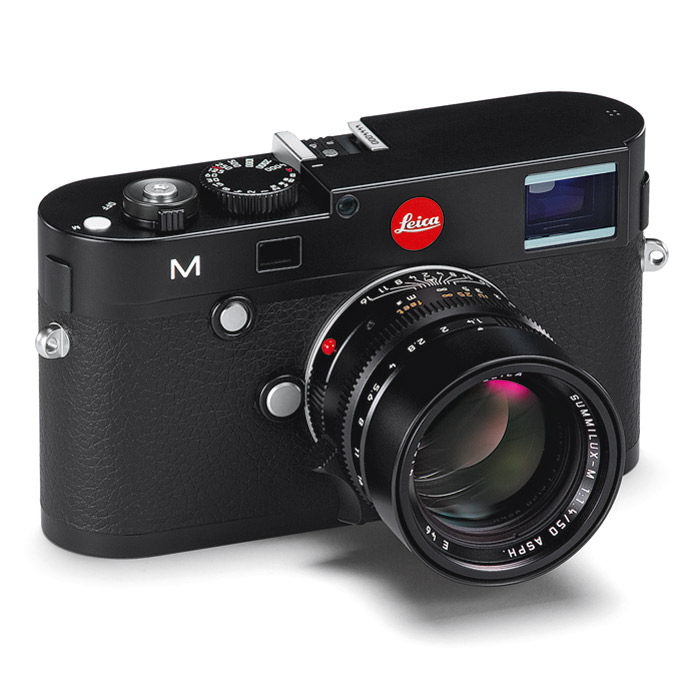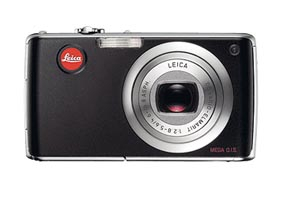Interview: Stash on His Leica Collaboration With A Bathing Ape
The beloved graffiti artist explains how documenting his own work led to product development
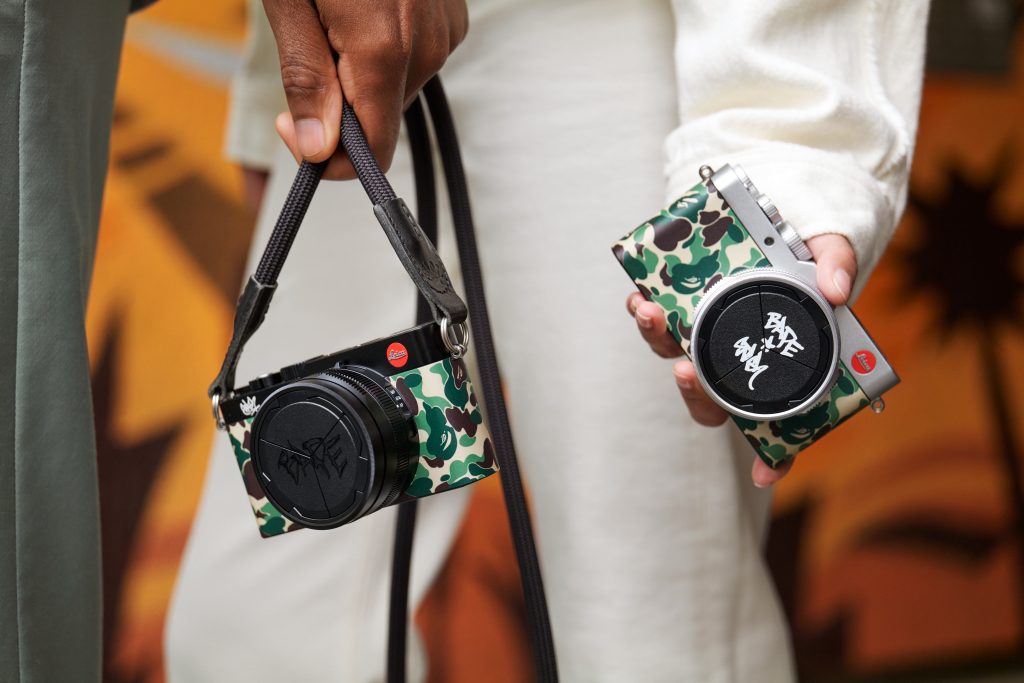
After hosting multiple Leica-powered photo exhibits across the globe, world-renowned NYC-based street artist Stash (aka Josh Franklin) has taken his partnership with the German manufacturer to the next level by introducing the limited edition Leica D-Lux 7 “A BATHING APE® х STASH” camera. Stash brought the acclaimed Japanese fashion label A Bathing Ape into the project to create a trifecta of distinct talent. The compact camera features a 17-megapixel sensor and a super-fast lens, and quickly pairs via Bluetooth to the Leica FOTOS app to save images and videos to your smartphone or share them. Featuring BAPE’s logo and signature camouflage pattern, as well as Stash’s signature, the camera comes with a bag and carry strap. We caught up with Stash—who was quick to quip that “phones take images, Leicas take pictures”—when he arrived back in the US after the camera’s launch in Japan.
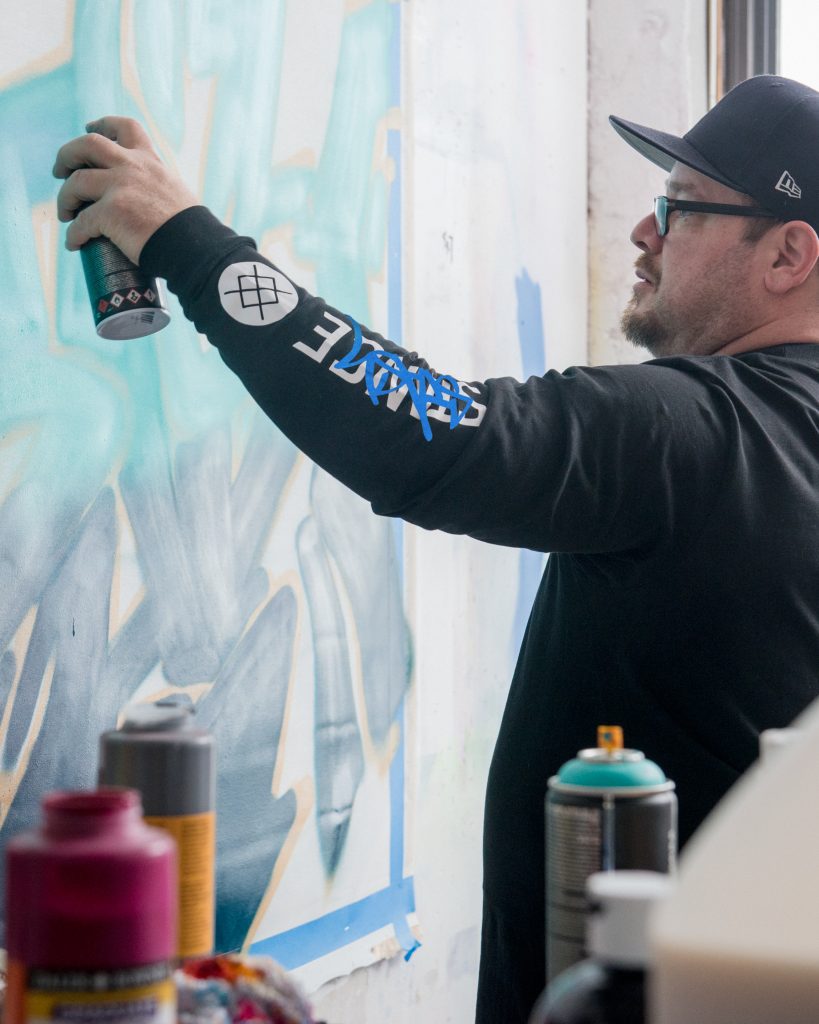
How did this collaboration with Leica originate?
I’ve always documented all my travels. When I would do a piece, I would try and take a photo of it the next day—just to the best of my ability. My dad was a photographer. I didn’t grow up with him, but I kind of had a taste of photography early on and I was really fascinated with it. The whole idea of capturing the moment—documenting. More so now, I’m into photography for a lot of different other reasons, but it started with being able to just document my travels and all my shenanigans, because as an artist I would pull up, could be LA, could be anywhere, and would always try and find some place to paint.
I didn’t really get into Leica until digital. I couldn’t afford, quite frankly—as much as I admired them—the Leica camera. I knew all about it, I know about the glass, the lenses, I started learning more about photography, but it wasn’t until digital was introduced to my life that I was able to step into the Leica world and be able to explore what I had only had heard about.

What was the first thing you shot on a Leica?
I was given a Leica camera. They were introducing the Q, I believe. I was on a work trip. I was painting a mural in Baltimore and right before that trip [they said] “Hey, let’s see what you’re into.” There was no assignment. There was no “bring us back something.” It wasn’t like that. They were excited to introduce their cameras to a new group of people. I guess digital is amazing too because the audience just expanded exponentially. I was just part of a group of people invited to test drive.
How did you progress from there?
It just became a very good relationship with a lot of conversations. We were trying to figure out how we could work together: myself as the artist and Leica as the brand. It’s a little unconventional, but when we talked about it, we were like, “Well, what if we brought in a third party and did something that really represented both brands.”
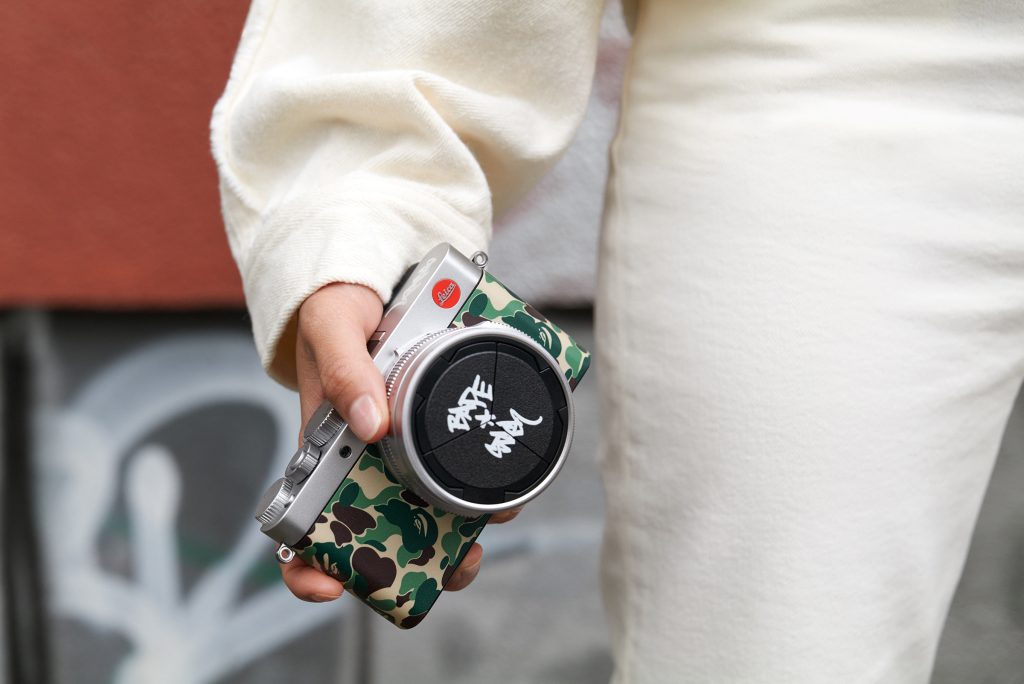
How did the end up being A Bathing Ape?
Because of my association with A Bathing Ape over the years and my friendship with the brand, even after Nigo left—and much respect to Nigo, who founded and started the brand. I maintained a relationship with the brand and so I thought they’d be a great label to work with, because of their style of audience, the massive audience that follows BAPE. The creative energy. I just thought like, “Hey, I wonder if they’d be interested.” With the blessing of my friends at Leica, I went and introduced the idea, pre-COVID, in-person.
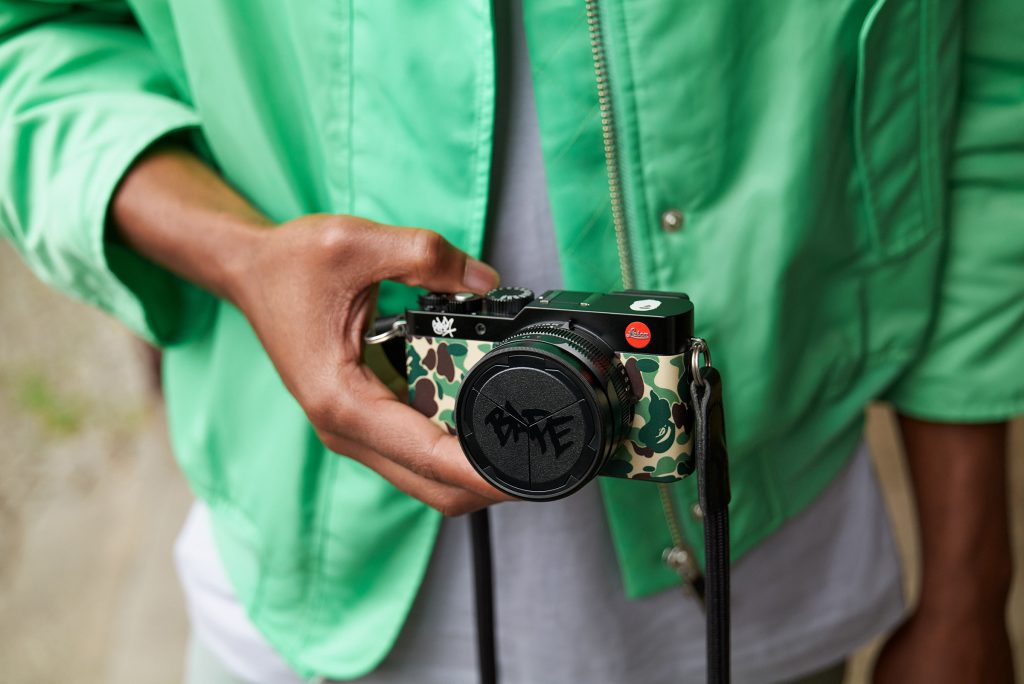
How did you develop the design of the camera and case? How involved were you in that aesthetic direction?
It’s funny, as a collaborator with Bathing Ape, a lot of times they will supply us with iconography and ask for our twist or say, “Can you include this in what you’re working on?” So in that way, the language is identifiably BAPE. When I presented Leica to BAPE, I took the liberty of making mock-ups because we’re friends. I needed a starting point. I did it as a black-on-black camo and thought of more of a stealth version and everything was really just sort of monochromatic. It wasn’t as poppy as the current model with the green.
I’m tactical and respectful when I work with other brands. I don’t really want to take liberties until they’re given. I played the safe card. I creative directed with the recipe book that we had. They have a lot of recipes to work with and their camo is identifiable, so I was able to be the creative guy that suggested to use that as the icon on the camera. The placement of the graffiti, we talked about where that would go. My signature, their BAPE head logo. That’s sort of how it came about.
What was the first picture that you took on the new BAPE Leica?
The first group of photos I took in my personal art studio and I dubbed the show And Now. That was the show that I had in the Los Angeles Leica store.
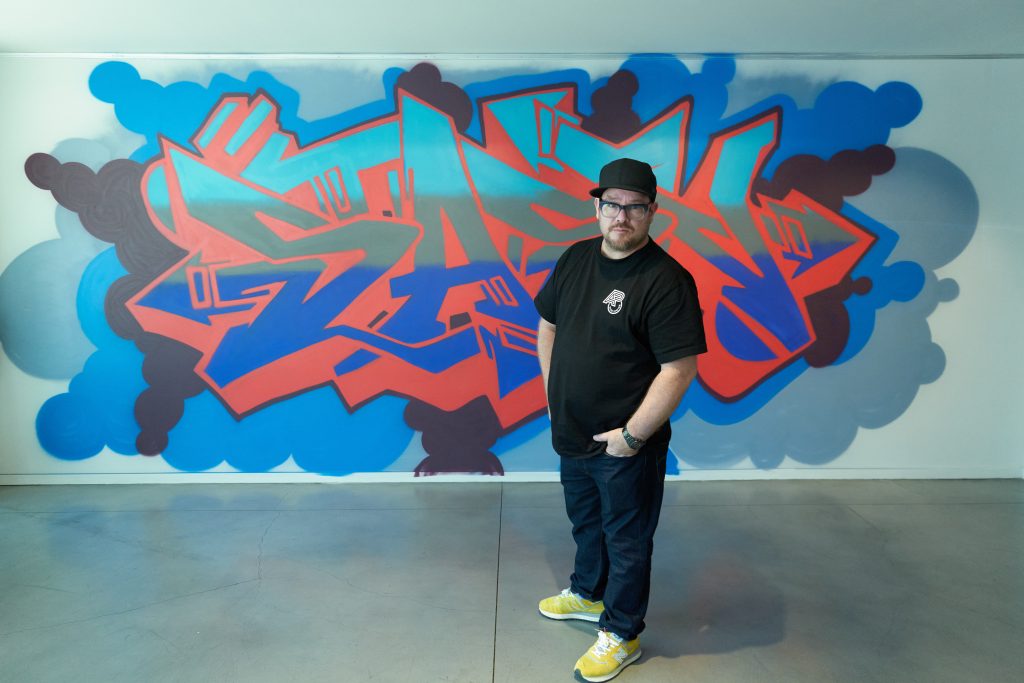
What are your tips for somebody who’s getting this camera today and they’re taking it out?
I think this is the perfect entry-level camera, certainly within the Leica range. I’m not a salesman for Leica. I’m not that guy. I’m not trying to sell anybody anything, but to answer your question honestly: my daughter took photography in high school. She’s since out of college now and I gave her my camera as a gift. She’s like, “Oh my God, I haven’t done photography in a minute.” The way she expressed, after using the camera, the ease of learning aperture, shutter speed… They make it very easy. If you want to learn how to do photography—and not master it but just learn nighttime settings, daytime settings, speed, all these things—it’s very easy to comprehend. If not, you could put it on automatic and take the illest photos ever and never look back.
But you know what? When I do automatic, I tend to go and look and see what the camera decided to set it on. That’s how I’ve learned weird things. I go, “Oh, really? The camera decided 800 ISO with a shutter speed of this and aperture of that?” So I go, “OK, let me manually set it that way and see if I can recreate that same setting.” That’s how I cheat and learn certain things.
Images courtesy of Leica
